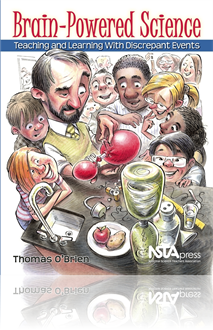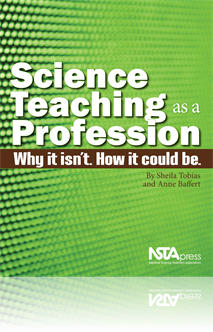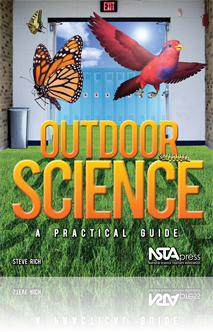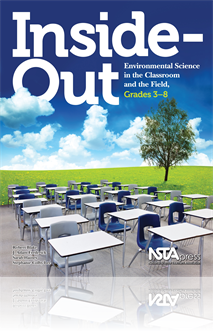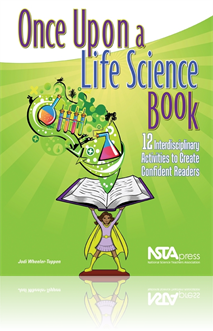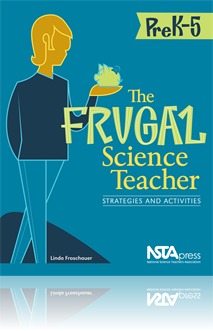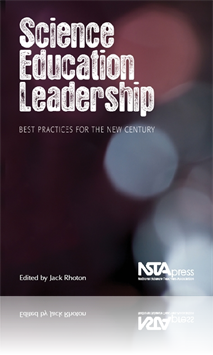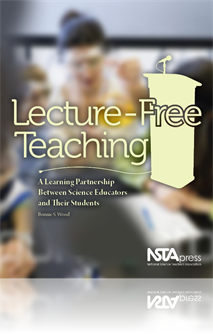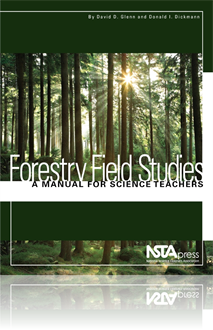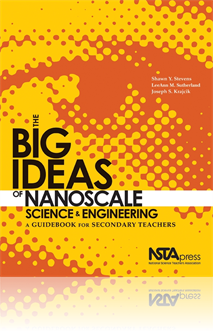All Book Chapters
Book Chapter
Air Mass Matters: Creating a Need-to-Know
Air has weight and exerts a pressure of 10 N/cm2 (or 14.7 lbs/in2) at sea level. Gases are not “no thing.” Gases have mass, occupy space, exert pressure, and are composed of molecules separated by truly “empty” space. Inertia, or the tendency...
Book Chapter
This chapter discusses what the United States has long believed are the essentials with regard to teacher compensation: pay, tenure, and the presence or absence of unions in determining teachers' compensation and working conditions. The chapter also ...
Book Chapter
Birds, Bugs, and Butterflies: Science Lessons for Your Outdoor Classroom
Among the wild animals that may travel through a school yard, birds, bugs, and butterflies are the most common—the focus of most of the lessons in this chapter. It offers a variety of activities to allow you to “tame” the wildlife to help you t...
Book Chapter
The same water that has existed on Earth for millions of years travels through a series of steps in a cycle from mountains to the sea, flows in and out of the cells in your body, and comprises 95% of the mass of a jellyfish. In short, water is the co...
Book Chapter
It is easy for ecology to degenerate into lists of vocabulary words and isolated concepts, leaving students without an appreciation for the complexity of ecological systems. This chapter is designed to help students think about the connections betwee...
Book Chapter
This chapter provides an overview of the book that has everything needed to boost students' science and reading skills. Start by learning about the strategies you need in Chapters 2 and 3, and then dive into the 12 content chapters. As you work throu...
Book Chapter
There are many misconceptions about the urinary system. The misconceptions make it hard for students to understand the critical role of the kidneys. This chapter starts out by having students identify their current ideas about urination and leads the...
Book Chapter
Students often believe that classification is an innate system in nature, discovered whole and unchanged by scientists. In this chapter, students will get a brief introduction to how classification has changed over the years by studying the odd organ...
Book Chapter
The word adaptation, as used in everyday speech, refers to a choice that individuals make to adjust to a new environment. In biology, adaptation refers to changes in populations that result from natural selection. This chapter uses a simulation invol...
Book Chapter
Bacteria: The Good, The Bad, and Getting Rid of the Ugly
Most students think about bacteria primarily in the context of disease. However, bacteria are the most numerous organisms on Earth, and only a fraction of them cause disease. The exploration in this chapter—growing bacteria from the environment—i...
Book Chapter
As mammals that live in the water, whales have been an enigma since the time of Darwin. In the past 20 years, biologists and paleontologists have uncovered a remarkably complete story of whales’ transition from land to water. The evolution of whale...
Book Chapter
Reading strategies can be important for helping students improve reading, but students need something more. They need to begin to view reading as an active search for meaning that is within their control. In this chapter find out how teachers can ch...
Book Chapter
How Do You Know That? Helping Students With Claims and Evidence
Making claims (often called conclusions) and providing evidence are at the heart of the practice of science. Any simple activity that has students focus on making a claim and supporting it with evidence can be used as a starting point for introducing...
Book Chapter
This chapter has two main goals. The first goal is to ease students into the reading procedures described in Chapter 1 by using two reading passages—“On Your Mark!” allows students to practice using the codes to show what they are thinking as t...
Book Chapter
The lesson in this chapter is designed to open a unit on cells and cell parts. In the exploration, students will view plant, animal, and bacteria cells through a microscope while looking for the answers to their own questions about cells. The reading...
Book Chapter
The basic ideas in this chapter are simple. The cell duplicates important parts (including DNA) and then divides in half. Students often find the topic of cell division difficult because they become bogged down in the immense vocabulary associated wi...
Book Chapter
All animals have some form of a skeleton. Fish, amphibians, reptiles, birds, and mammals have an internal skeleton, made of bones or cartilage. Arthropods have a stiff internal skeleton. Worms and other soft-bodied invertebrates have a hydrostatic sk...
Book Chapter
This chapter focuses on the relationship between genes and alcoholism. Examining this relationship can help students make wise choices about drinking, and it also can help them gain a wider perspective on genetics—a perspective that can help them u...
Book Chapter
Materials Repurposed: Find a Wealth of Free Resources at Your Local Recycling Center
By looking at the function and purpose of any piece of equipment, a creative teacher can find a suitable replacement for many premade science materials, sometimes from the most unlikely places. This chapter features a few of the recyclable items the ...
Book Chapter
A New Challenge for Science Education Leaders: Developing 21st-Century Workforce Skills
Contemporary justification for a vision of improved science education resides in themes such as education and the economy, basic skills for the workforce, and thinking for a living. Such themes differ from earlier justifications such as the space rac...
Book Chapter
The authors argue throughout this book, meaningful, lasting change in the quality of secondary science is going to depend on what teachers do for themselves. This book, thanks to the amount of formal and informal input we have had from secondary scie...
Book Chapter
Looking Forward Into the 21st Century: Implications for the Science Leader
Science education and STEM (Science, Technology, Engineering, and Mathematics) education are often used interchangeably. As science educators in search of our place in STEM education, we face a professional identity crisis. In this chapter, the autho...
Book Chapter
The Content-Understanding-Environment (C-U-E) framework incorporates key findings from research and is easy to use and remember. Further, current professional development for science teachers usually focuses on only one aspect of teaching and learnin...
Book Chapter
The strategies associated with the “Content” aspect of the framework help keep us focused on the question “Why am I doing this?” Clearly, we need to know and be able to articulate why we are addressing particular content in our lessons and ho...
Book Chapter
This chapter focuses on strategies you can use as you work with students to develop their understanding of science concepts. After reviewing the research on effective science instruction, six instructional strategies are provided to help develop stud...
Book Chapter
Content and understanding strategies contribute in large measure to the instruction we provide. Yet the effectiveness of the most carefully crafted lessons and instruction will be enhanced or undermined by the classroom climate—including relationsh...
Book Chapter
The Content-Understanding-Environment instructional framework presented in this book is meant to add some tools to your toolbox. Many of the tools are ones that you already use, but others may be sitting on your workbench waiting for a chance to be p...
Book Chapter
The Chronology of Course Design
Although the unpredictability of leading a lecture-free class may be unsettling at first, the author encourages you to embrace the energy that accompanies this pedagogy. Flexibility and responsiveness to what happens during each class meeting with ea...
Book Chapter
Forest History, Ecology, and Values
Forests have been crucial to human welfare since the dawn of civilization. The history of both the Old World and the New World contains many examples of civilizations that failed because they could not sustain their wood supplies and maintain the for...
Book Chapter
The core value of forestry is the long-term sustainability of forests. Sustainability can be accomplished only if we understand ecological processes and respect them; then we can creatively protect and shape forests to satisfy the needs of future gen...
Book Chapter
Unquestionably, conducting successful field studies with high school or beginning college students is complicated, energy consuming, and challenging. Nonetheless, putting students in the field to collect real data, analyze the data, and eventually dr...
Book Chapter
Mapping the structure of the vegetation in study plots is important for several reasons. First, with all the detailed data collected, students easily can lose perspective of the bigger picture; they can get lost in the trees and not see the forest, s...
Book Chapter
The Abiotic and Biotic Forest Environment
The exercises in this chapter have a twofold purpose. First, they will characterize the abiotic environment (i.e., the microclimate created by the forest). It is important to realize that forests not only grow in response to the local climatic factor...
Book Chapter
Measuring Commercial Timber Values
This chapter outlines certain procedures used by foresters to measure the amount or volume of timber (primarily sawlogs) in a forest stand. This process is called timber inventory. Just as a storeowner keeps track of the inventory of stock on hand at...
Book Chapter
In fiscal year 2007, there were more than 178.6 million visits to national forests across the United States; 86% of them were for recreational purposes! Forests of all kinds provide humans with a wide range of wildland recreational opportunities, whi...
Book Chapter
Students are out of the field and back into the classroom. In this chapter, students are provided with a Forestry Data Summary Sheet to help them focus on all the computations, sketches, charts, and data they need to construct and write their report....
Book Chapter
The Foundational Science Content
Four of the big ideas represent the basic science content: Size and Scale, Structure of Matter, Forces and Interactions, and Quantum Effects. And all four are interrelated. None of the science-content big ideas stands alone; each informs and is info...
Book Chapter
Self-assembly is the process of matter organizing autonomously and without human intervention (Whitesides, Mathias, and Seto 1991; Withesides and Boncheva 2002). The process of self-assembly can be introduced in a range of contexts in the natural and...
Book Chapter
Development of new tools and instruments helps drive scientific progress. Recent development of specialized tools has led to new levels of understanding of matter by helping scientists detect, manipulate, isolate, measure, fabricate, and investigate ...
Book Chapter
Scientists use models and simulations to help them visualize, explain, and make predictions and hypotheses about the structures, properties, and behaviors of phenomena (e.g., objects, materials, processes, systems). The extremely small size and compl...



